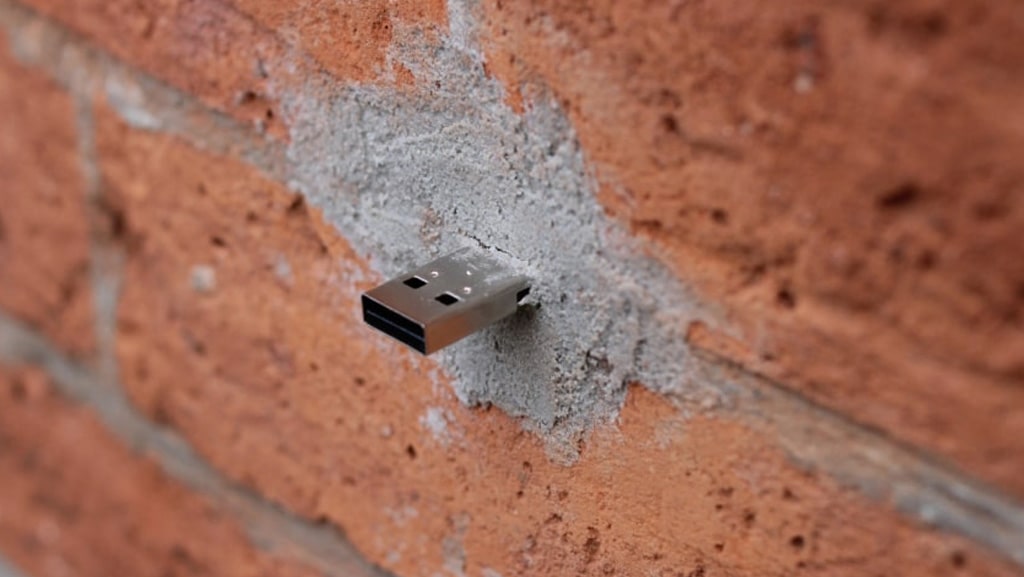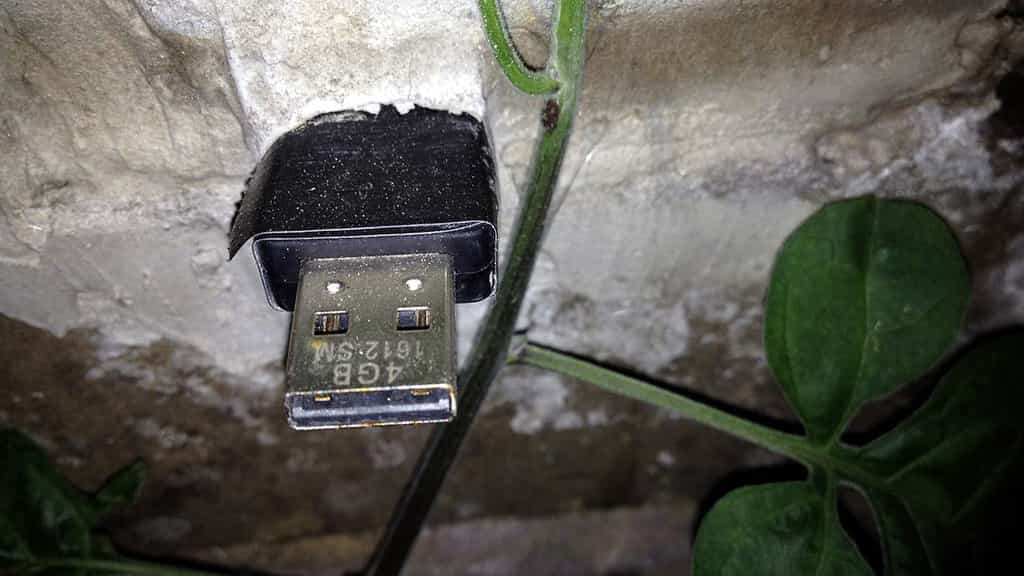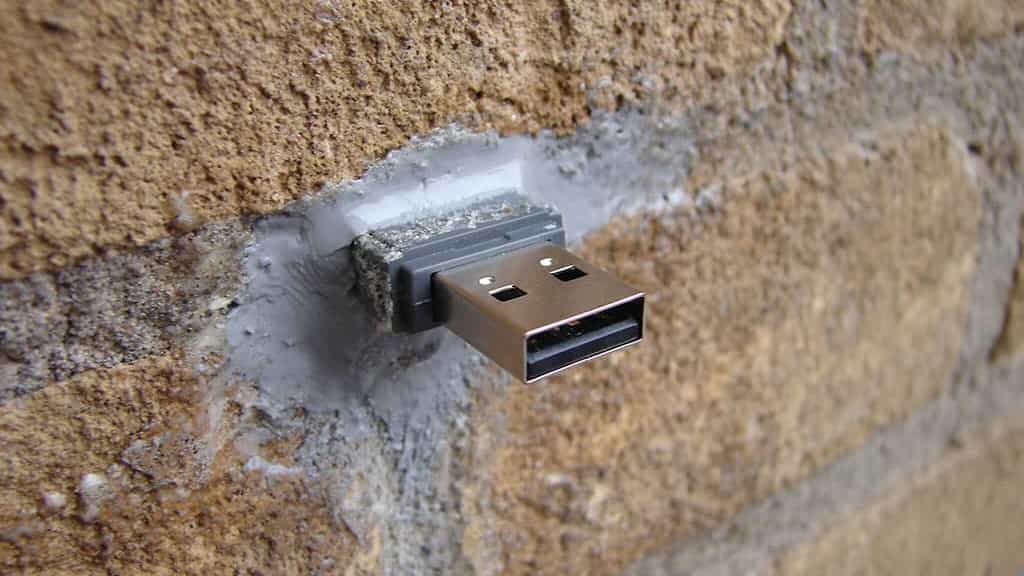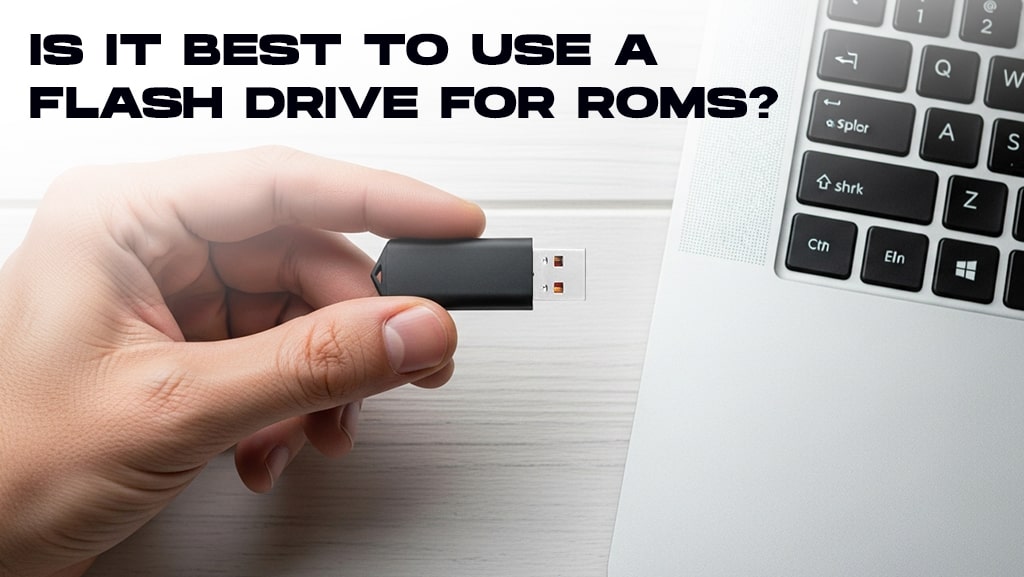
Express Yourself Through a USB Dead Drop
The phrase "dead drop" is an old one coming from the art of espionage. Dead drop refers to when two people exchange an item or a letter without meeting. One person leaves the object in a previously disclosed location and the other goes and picks it up at a later time. A live drop, on the other hand, would signify a similar exchange but with the two people present.

And while the Cold War is behind us, data exchange isn't and we have ever more channels to do it. Yet some advocates of the free flow of information aren't happy about certain restrictions imposed on these channels. This gave rise to numerous movements aiming to circumvent restrictions and bring people's ideas closer. USB dead drops is one such method of data exchange that is gaining in popularity.
How a USB dead drop works
USB dead drops were first brought to attention by Aram Bartholl, a contemporary digital artist, living in Berlin. A USB dead drop might be a custom USB drive that has been mounted (usually using cement) on a wall or other outdoors location. Together with his partners at the Free Art and Technology Lab (F.A.T. Lab), Bartholl started the first network of USB dead drops in New York, consisting of five USB flash drives available for public use. Anyone who brings their laptop or other USB-compatible mobile device can have access to the uploaded files and contribute with some of their own. Each USB dead drop must come with two files: a ReadMe file, explaining the purpose of the project and another one containing the manifesto behind it.
The Manifesto describes USB dead drops as an anonymous, offline, peer to peer file-sharing network in public space. It's an anti-cloud movement that anyone can start as long as they make it accessible to everyone. The beauty of it is that every USB flash drive is unique as it's a passive element that cannot be synced with other systems. If you have one in your neighborhood you can find something different every day, often something you wouldn't find on your own. There are so many creative ways you can use that leave funny messages for your neighbors, publish a poem and ask people who find it to read and respond, start a public debate, the possibilities are endless. Now think what could be done if USB dead drops were adopted on a wider level we could have them in theaters, in public transportation, parking lots, even nature.
The concept goes global
The initial project was launched in October 2010. Only six months later, and mostly by word of mouth, the idea spread to Europe and today there are 1,218 USB flash drives as part of the dead drop project. A website, deaddrops.com, has been launched to help people locate Dead Drops near them. You can find the exact location and the memory capacity of the USB. Often, the person who made the USB dead drop would leave their artistic pseudonym as well.

According to the organizers of the project, the USB dead drops were initially used by music bands wishing to reach more people, but other people soon followed suit and now you can find all sorts of artwork on them films, poetry, photos and whole art projects.
Some considerations
Of course, the idea is not without its critics. Since they are available to everyone, dead drops can easily become the victim of acts of vandalism. They can be physically destroyed, removed from their location or have all their contents deleted in a matter of seconds. Perhaps the biggest threat, though, is to the user because the contents of the USB flash drives can easily be infected (either intentionally or not) by viruses and other malware. Thus, if you want to participate in a USB dead drop file exchange, you need to ensure your safety. One of them is to disable to the autorun option that Windows devices come pre-configured with. The other way is to equip your computer with Linux or some other OS that is much less vulnerable to malware attacks.








